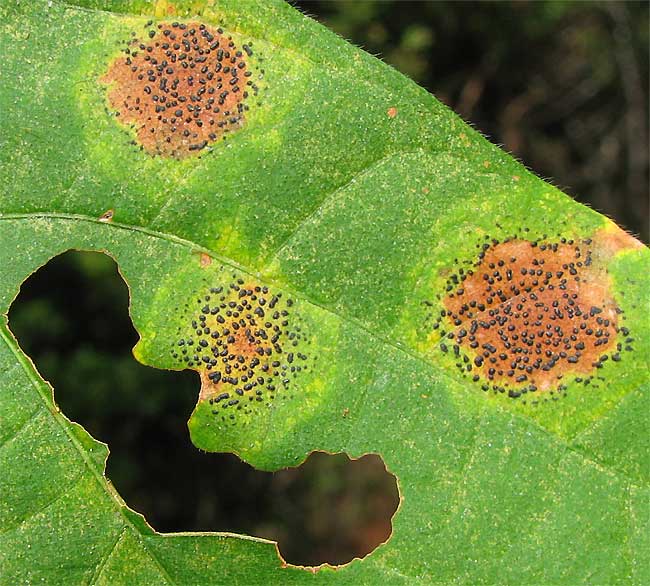Excerpts from Jim Conrad's
Naturalist Newsletter

from the September 20, 2009 Newsletter, issued from the Siskiyou Mountains west of Grants Pass, Oregon:
FUNGAL "BLACK DOTS" ON LEAVES
Nowadays here many Bigleaf Maple leaves are infected with a fungal "tar spot" disease, seen above. This particular tar-spot infection is caused by the fungus RHYTISMA PUNCTATUM, which is an Ascomycota, which means that it's grouped with mildews, molds, and the famously edible morels.
The fungi overwinter on fallen leaves. In the spring wind spreads spores from the leaf litter onto young, expanding leaves where the spores germinate. The resulting mycelium invades the leaves through stomata, which are the leaves' adjustable openings through which air is admitted. During the summer, black "stroma" form on the upper leaf surface. Stroma are masses of fungal tissue with spore-bearing structures embedded in or on them. The black dots, then, are stroma.
The stroma become wrinkly or convoluted as they mature and during the summer, on the resulting ridges, "conidia" appear. Conidia are asexual spores, which makes them different from the sexually produced spores rising from the leaf litter in the spring. Also on the stroma wrinkles, tiny "apothecia" develop in the autumn. Apothecia are typically cuplike, with their cups' inner surfaces lined with saclike structures called asci. The leaves fall onto the ground, then when spring comes the asci release the spores (technically called ascospores) that start the new life cycle.
You can see my diagram of a typical cuplike apothecium lined with ascospore-producing asci at https://www.backyardnature.net/f/funclass.htm#a.
Another common tar-spot disease, in which the black stroma are larger and merge to form large black spots instead of separate dots, is produced by the closely related Rhytisma acerinum fungus, found throughout North America. Our Rhytisma punctatum avoids the US southern states. Both diseases are regarded as eye-catching and easy-to-diagnose, but not as serious threats to the trees they infect.